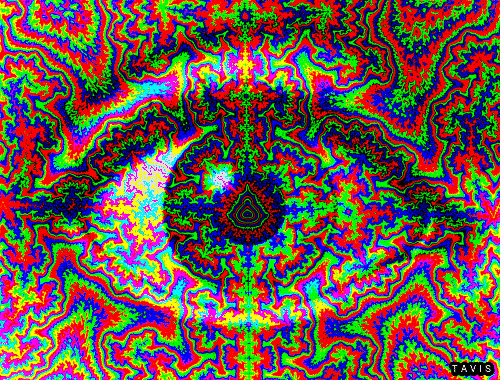I’ve been involved with Linux for a long time, and Flatpak almost seems too good to be true:
Just install any app on any distro, isolated from the base system and with granular rights management. I’ve just set up my first flatpak-centric system and didn’t notice any issues with it at all, apart from a 1-second waiting time before an app is launched.
What’s your long-term experience?
Notice any annoying bugs or instabilities? Do apps crash a lot? Disappear from Flathub or are unmaintained? Do you often have issues with apps that don’t integrate well with your native system? Are important apps missing?
I avoid it like the plague. It’s fat and slow, and the Arch repos + the AUR have just about everything anyway (I use Arch btw, in case you’re wondering). I’ll sooner build from source than touch anything flatpak.
It’s fat and slow
With modern hardware neither of those really are an issue. You can get a 1 TB nvme ssd for €50 and 2 TB for less than a 100. That should lend you plenty of storage and speed
I still find it noticeable 🤷 I do have an nvme ssd, and while 50 eur is negligible to you or me, not everyone is so lucky, + there’s no reason to create e-waste when your older hardware is working fine.
AUR can be an unstable mess at times (yes, it’s very convenient, but it has flaws and arch isn’t the only distro out there. Also the space argument just makes no sense, yes the 1st time you download a flatpak, it downloads like 1~2GB of dependencies, but after that all other flatpaks use said dependencies and are a fraction of the size. So ironically, flatpaks end up using less space than AUR packages, if you don’t clean out their cache…
There are too many, especially outdated runtimes in use. That is a problem. I have like 7GB of runtimes, somewhere a year ago when I roughly counted it.
flatpak remove --unused
All in use by like one app. Sorted them 100 times, still some need it and I need the app
Yeah I’m always wary of what I install from the AUR, never more than 1 or 2 packages on any given system. But a surprising amount of stuff can be found even in the main arch repos, so the AUR is rarely necessary.
Really awesome. They’re all contained within my home directory too, so when I swap distros I can just copy my home dir and all my installed apps are carried over that way. Super useful feature that never gets mentioned! The downside to flatpaks is having to use them for cli in any way is a huge pain.
Why not use a seperate /home partition if that’s something you value?
I do, that doesn’t keep packages installed between distro reinstalls or swapping between entirely different distros. I’m talking about the actual packages and app data themselves that are contained in home.
For automatic installation I recommend ansible, its real easy
There’s literally no need. It’s auto installed because everything is portable and most applications that launch .desktop files know to look for it’s directory.
that doesn’t keep packages installed between distro reinstalls or swapping between entirely different distros. I’m talking about the actual packages and app data themselves that are contained in home.
It’s auto installed because everything is portable
Then you didn’t explain it very well. Your former comment clearly states that copying the files keeps the packages (so you don’t have to redownload?) and the data, but “doesn’t keep packages installed” (hinting that .desktop files don’t get found)
Flatpak is good for chat apps and proprietary apps which you don’t want to have full access to your system
Positive to the extent that it’s my preferred. For graphical apps only, not sure I need to say that.
GitHub priority selection didn’t seem to work, but I select that as a default.
Stable, a few bugs and the user mode addition/ removal is a bonus. I don’t try to install low scored apps. I Gnome-Software and then Google for reviews.
Custom install of Fedora 38/Gnome.
The only problem I’ve encounter was the steam client not recognising my controller and then I’ve decided to install steam non-flatpak.
I started on Debian, Ubuntu and Fedora. Native apps where often horrible. I remember SciDavis for Ubuntu being completely broken, Libreoffice for Fedora, and Flatpak just worked.
Officially supported Flatpaks are great, a bit like the Windows way but better, as they are reviewed, containerized and in an actual repository.
But flatpakking random apps isnt that easy, but I really want to learn it. Especially an easy semi-automatic way of converting Appimages (may they burn in hell) to Flatpaks. Like BalenaEtcher and so many more.
Also, Flatpaks are not secure in the case of biig projects. Nearly all the known Linux apps like Libreoffice, Gimp, Inkscape etc are unisolated. And trying to specify the permissions (only home and all the mounts, instead of your entire root partition) gives you “they are insecure anyways and should get portals” and your PRs closed.
So they are in a very incomplete state currently, and you need to manually secure them to be actually kinda protected. But without Portals, entire home access is not actually isolated.
Also, try and use the --verified repo:
flatpak remote-add --subset=verified flathub-verified https://flathub.org/repo/flathub.flatpakrepoProblem here is that many apps like VLC, that work great, are not yet adopted by upstream, so the verified repo is not really usable currently.
And native messaging (keepassxc-browser, etc.) and other things are not always working. Drag&drop is, for some reason, but not in Firefox, maybe there are different ways.
Its quick and easy to install a flatpak which is the latest stable which is a godsend when the versions available through package manager are years out of date. Not everyone can compile from source or add an additional source repo. My only big issue is how bloated flatpaks are size wise and where stuff gets installed in my file system.
Really my only complaint is that updating them is kinda wonky. I have to run the command multiple times to get them all updated. I’ll get cryptic error messages and then just have to run it again and again until it goes through.
some things only work properly using Flatpak - Steam/CS:GO and Shotcut video editor, other things don’t work well at all - VSCodium so it depends i guess. i use Arch/Gnome/AMD gpu
deleted by creator
Welcome to Slackware, friend!
deleted by creator
deleted by creator
Flatpaks are integrated into the store. If you’re using fedora.
If you’re using Ubuntu, then snaps are probably integrated. What I’m trying to say here is that your comment is useless if you’re not going to mention your OS
It’s fine. No real crash/stability issues on the flatpaks I’ve installed. The real downsides are that, yeah, some apps don’t integrate well with the rest of the system either in some functions or theming, due to the sandboxing, and if an app has many or large dependencies it can take up a lot of space compared to a native/repo app and you also may then have more than one copy of those dependencies on your system. That doesn’t usually cause conflicts (a positive side of sandboxing), but it may be a problem on smaller storage devices if you use a lot of flatpaks or need other large apps installed.
I’m a fan of anything that would make it easier for developers to bring their apps to linux.
I absolutely love it. Easy to find newer versions of things than what’s in my distro’s repos, easy to update. The only snags I’ve encountered is sometimes (very rarely) a program won’t have access to part of my storage or my system’s dark theme isn’t applied. The former is super rare and the latter is usually 5min of searching the web to remember how to change the theme for a flatpak.
EDIT: after reading some of the other comments, I should mention that I only use it for GUI applications. I’ve not yet tried any TUI/CLI applications as flatpaks.
I haven’t figured out an easy way to install a specific version of an app, which means that when an app update is broken I’m out of luck until a fix is released, so I’ll install the snap of the app until then (Spotify is a recent example). Don’t like that.








